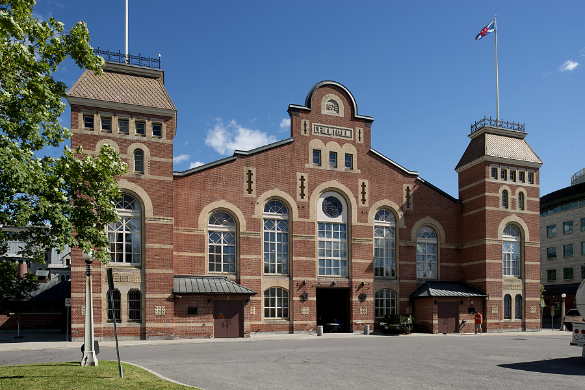Student Blog: A Summer Job in Heritage with the DND

As we head into the home stretch of the academic year, students are starting to consider what they’ll be doing for the summer. Some of our students in the History & Theory of Architecture program have landed very exciting summer jobs in which they’ve been able to apply the skills they’ve learned at Carleton. This blog is by one of those students, Jonathan Hinkins, currently in fourth year.
By Jonathan Hinkins
Last summer I was given the opportunity to see just one of many possible careers for graduates of the History and Theory of Architecture program. I worked for the Department of National Defence (DND) through the Federal Student Work Experience Program (FSWEP). I was placed under their Heritage Asset Manager, working on a portfolio of just under three hundred federally designated historic buildings that are located across the country.
Each of these buildings had unique features and histories that cemented them as important pieces of Canada’s history. However, they are old buildings that continue to operate in various roles since they were first built. From a maintenance point of view this presents quite a complex situation. DND needs the buildings to be operationally effective, and these buildings serve a wide range of functions, some being used as armouries, storage, housing, and even hangars. Under government policies we must protect the building’s heritage elements, even as we continue to use these buildings and upgrade them to meet new operational demands.
Every day I went into work I had a new building that I could work on. One of the biggest aspects of my job was determining if specific work done to a building would require a heritage conservation review and plan. A lot of times it would be different for each building. In some buildings we could paint doors or replace the roof without a conservation plan because they weren’t heritage elements. For others we had to come up with a conservation plan if they were replacing windows that were heritage features that contributed to the building’s history. Each question that came in allowed me to use what I learnt in a different way than writing essays, I got to put my knowledge into practice.
Many times, when I got a project’s conservation plan that needed a review done by Parks Canada, I was able to review it first and see many ways that heritage experts protect historic elements in conservation. Going back to the window replacement example, I saw how they decided how to balance operational effectiveness with conservation of heritage elements. They did this in multiple ways by identifying which windows could be repaired, and which ones were too damaged and needed to be replaced. When they did find heritage aspects that needed to be replaced, it would be with something that increased operational effectiveness as well as respecting the original parts. One example of this was hat when replacing wooden windows with aluminum ones, wood trimming that matched the original was installed. However, what works for one building will not always work for another. I saw throughout the summer that each building needed a tailored conservation plan in order to maintain the history of the building.
Through this job I saw multiple ways that an HTA degree is a great asset for heritage. Conserving heritage buildings will be one of Canada’s greatest challenges in the coming years as we go towards carbon zero. Many interventions are needed in these structures, and each presents a unique challenge. And these challenges are being seen on the national level. 24 Sussex Drive, the official residence of the prime minister, is in terrible condition, and its future is being discussed. Perhaps one such future we from HTA could argue for is a renovation that respects its history while bringing it into the 21st Century.